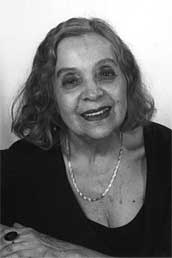Difficult, but not impossible. You see, all of the folk portraitists that have appeared here so far have one thing in common: have were white.
There were probably scores of African American portrait painters in the 19th century; some slaves were specifically taught to paint. The problem is that so few are documented or known by name. There is one notable exception.
Joshua Johnson spent 30 years painting portraits in Baltimore, Maryland, from 1795 to about 1825. Thirty years in the same place, plying the same trade among the same community. And yet so little is known about him, other than the paintings which are ascribed to his hand. We do know that Johnson was a free man, which was not unusual for a city where the freed Blacks outnumbered slaves by more than two to one. A 1782 document cites a Joshua Johnson who was a blacksmith, aged 20, who was finishing up an apprenticeship and soon to be freed. It is not certain whether this is the same Joshua Johnson as the portrait painter. City directories list Johnson as a painter beginning in 1796, and trace his movements around the Baltimore area over the next several decades.
Other than that, very little is known about his life. But the paintings speak volumes.
The nineteen works known to have been painted by Johnson display a keen sense of design and color, and a subtle delicacy that is rarely equalled in Anerican art. The subjects, overwhelming white, are all rendered with great sensitivity despite the obvious challenges in the naturalism of the figures. This is a common problem in folk art but in the best works can be turned to advantage by emphasizing pattern rather than three-dimensional form and perspective.
It's a pity that we don't know more about Johnson, and that there is no known self-portrait of the artist. He remains a figure who devoted his working life to preserving the appearance of people in his city, and yet no one knows what he looked like.
But the Johnson portrait stands out as a distinct memory. As you walked up to the painting, your movement triggered an audiotape which said, simply and plaintively, "who will paint my portrait?"
From top:
Westwood Children, ca. 1807, National Gallery of Art
Grace Allison McCurdy and Her Daughters, ca. 1806, Corcoran Gallery of Art
Edward and Sarah Rutter, ca. 1805, Metropolitan Museum of Art
John Jacob Anderson and His Sons, ca. 1812-15, Brooklyn Museum
































